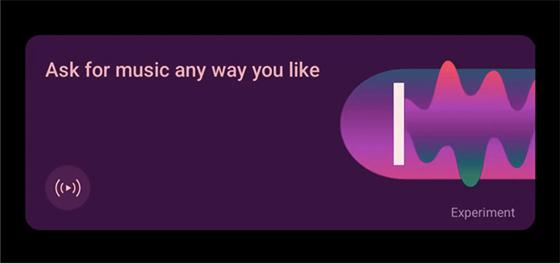
Humming discombobulated snippets of a song to a friend isn’t
usually the best way to identify a tune that is stuck in your mind.
Apps like Shazam and SoundHound that identify music don’t title anything but a legitimate recording, nor do
streaming platforms like Spotify, Apple Music or Amazon Music. YouTube Music is the first -- launching the ability for its users to “hum to search” directly in the app.
The Spotify
and Apple Music competitor's new tool, called “sound search,” now allows all users to search YouTube Music's catalog of over 100 million songs by using natural sound.
Users can tap
“search” in the app, look for the waveform icon and then begin humming, singing, or playing an instrument to find a desired tune on both iOS and Android.
YouTube announced the beta
version of sound search back in May, with Google running a promotion featuring rapper Kid Cudi humming his hit “Pursuit of Happiness” into his smartphone and receiving a list of three
possible tracks with cover art, song name, artist, album, year, download status and options to play or save to your YouTube Music library.
advertisement
advertisement
Searching via natural sound is a first for leading
music streaming platforms, which are in a tight race for both consumer attention and advertising buys.
In March, The EU tried to level the playing field by filing its first antitrust penalty
against Apple, fining the tech giant almost $2 billion for forbidding rival
music streaming apps like Spotify from telling users how they could pay for cheaper subscriptions outside of iPhone apps.
In addition to YouTube Music's sound-search tool, the platform says it
is testing an “AI-generated conversational radio” in the U.S. for paying subscribers, which allows users to create a custom radio through “describing exactly what they want to
hear.”
Some premium users will discover an “Ask for music any way you like” card in their Home feed that opens a chat-based user interface with the choice to “Ask for
music.” Chosen testers can then enter a prompt or select from a list of suggested prompts. Using their voice, they can describe in a conversational tone what they want to kick back and jam
to.
Personalization enabled through the use of emerging AI technologies is the current focus for music streaming services, especially Spotify, which launched its “My Spotify” campaign last month that highlights users'
in-app listening habits on home page banners and in-app personalized messages.
Spotify's evolving “Made For You” hub, which houses features like DJ, Blend, Discover Weekly, Daily
Mix and Spotify Wrapped.
YouTube is likely trying to win over part of Spotify's audience by introducing its own personalized features, including a superior recommendation algorithm.